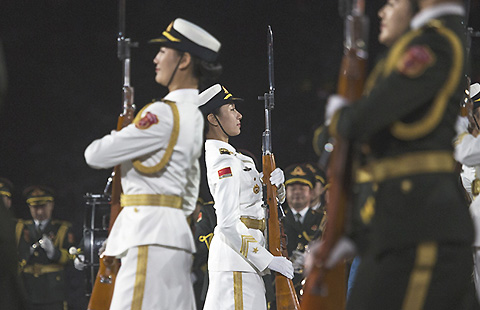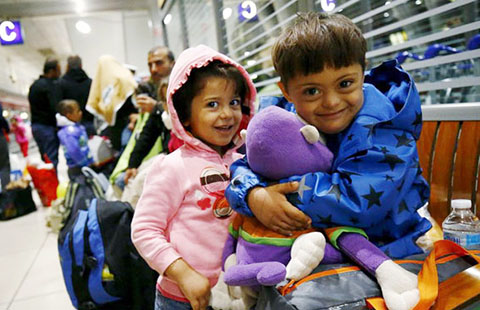
EVOLUTION NOT REVOLUTION
The changes have been more evolution than revolution, but they were not always smooth.
A 1969 fly-on-the-wall TV documentary "Royal Family" was viewed by commentators at the time as damaging to the monarchy's mystique, and the queen's daughter, Princess Anne, later said it was a "rotten idea".
But another innovation the following year, the royal "walkabout" with the crowds, became a regular occurrence.
"The walkabout ... in a way symbolised not only classlessness and informality but a sense of public affection for the institution," Professor Philip Murphy, director of the Institute of Commonwealth Studies.
"They certainly quickly stepped back from the fly-on-the-wall 'we're just an ordinary family' way of presenting the royal family."
The celebration of her silver jubilee in 1977 and the national joy at the wedding of son and heir Prince Charles to Diana Spencer, and the birth of their children in the 1980s, gave way to tribulations in the 1990s, when "the firm", as the royal family is nicknamed, was at its lowest ebb.
The marriages of three of her four children collapsed, most notably that of Charles and Diana, in the full glare of Britain's tabloid media, prompting changes aimed at showing the public that the royals were more than just a privileged, dysfunctional family.
They agreed to start paying taxes on their income and in 1997 Elizabeth bade farewell to her much-loved royal yacht, Britannia, and the newly-elected Labour government refused to sanction paying for a replacement. She cried, the only time she has shed tears in public.
Just a few months later, Elizabeth faced the greatest crisis of her reign when the hugely popular Princess Diana was killed in a car crash in Paris, after which the media criticised her for staying at her Balmoral home in Scotland in the immediate aftermath.
Among the flowers left for Diana, one bore the message: "You were a rose among a family of thorns".
"The only time as far as I know when the queen's hand was forced (was) when she came to London a day earlier than she intended to," Vickers said.
The 1997 upheavals and questions about the monarchy's future coincided with a landslide election victory by Tony Blair's Labour Party and a period of new confidence in the country which earned the moniker "Cool Britannia".
Blair, the youngest prime minister of the 20th century, chimed with the public mood over Diana, famously describing her as the "the people's princess".
"The death of the Princess of Wales was a most extraordinary period in British national life," said Simon Lewis, who became the queen's communications secretary in 1998 when the royals were still bruised from the fallout over Diana.
Lewis, who left the queen's service in 2000, said the Windsors had understood they always had to adapt.
"What struck me was that essential view that the institution was as solid as a rock but it needed to evolve," he said.
Buckingham Palace has been opened to visitors, some two million have attended garden parties hosted by the queen there, and there is greater visibility around financing and what the public pays for.
Those around the queen have changed too, exemplified by Lewis himself, educated at a north London state school and with a background in the private sector.
"I think these have been really quite significant changes that we now accept but at the time they were quite significant leaps," said Lewis.








